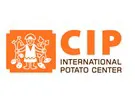 Over the last decade, sweet potato has gradually become increasing more common and important in the lives and diets of small-scale farmers and their families in many African countries, according to an academic article by four International Potato Center (CIP) scientists. With yields now up to four times higher than before CIP interventions, scientists can turn their attention to promoting the ways sweet potato can enhance control of soil erosion and reduce weed pressure in intercropping regimes.
Over the last decade, sweet potato has gradually become increasing more common and important in the lives and diets of small-scale farmers and their families in many African countries, according to an academic article by four International Potato Center (CIP) scientists. With yields now up to four times higher than before CIP interventions, scientists can turn their attention to promoting the ways sweet potato can enhance control of soil erosion and reduce weed pressure in intercropping regimes.
The article highlights the growth, progress and lessons learned in the fields of southern Africa where scientists have been breeding and helping disseminate vitamin A-rich sweet potatoes tolerant to drought. In many ways, the story they tell – through numerous scientific studies – documents the rise and acceptance of sweet potato in drought-stressed areas of sub-Saharan Africa, as the hearty crop has proven valuable for its ability to grow quickly in difficult conditions and to deliver vitamin A to families in need of better nutrition. But it also sets the stage for the next generation of needed research.
The full article is available in Frontiers in Sustainable Food Systems, as part of a special issue on Sustainable Production of Nutrient-Dense Crops, a journal dedicated to research for achieving a sustainably food secure world.
CIP scientist and 2016 World Food Food Prize award-winner, Jan Low, said the time had come to take stock of their achievements while looking ahead to new challenges: “As we have come to the end of an exciting decade of breeding and disseminating drought-tolerant, vitamin A rich sweet potato in Southern Africa, it was time to reflect on what we have learned and what we need to do to maximize its contribution to next-generation, sustainable cropping systems.”
Low, who led the recently-concluded 10-year Sweet potato Action for Security and Health (SASHA) project, says she and her collaborators have witnessed food systems under increasingly intense pressure from climate change, and now compounded by the effects of COVID-19.
The major achievement concerns sweet potato’s gradual acceptance in the lives and diets of small-scale farmers and their families. Over the past decade, 19 drought-tolerant varieties of sweet potato, developed by CIP, have been released in Malawi, Mozambique, South Africa since 2009. The ability to generate these varieties was possible using CIP’s accelerated breeding scheme, which cut the breeding cycle from 8-10 years to 4-5 years.
The reception of sweet potato has improved vitamin-A intake dramatically, a crucial nutrient to enrich expectant mothers, and to ward off disease in young children and vulnerable populations.
These successes, however, were not without occasional setbacks, according to the article. Maintaining perishable vines, the planting material for sweet potato, during long dry seasons is a major challenge for small-scale farmers. But through many months of hard work and collaboration with national partners, CIP scientists have developed a root-based seed method, the Triple S method—to store roots in sand during the drying season. Then the sprouted roots are planting in protected nurseries and water six weeks prior to the start of the rains. This low-tech approach is effective in overcoming the bottleneck.
Other notable gains were made in sweet potato yields, which are now up to four times higher on average than prior to CIP interventions. CIP agronomist Elke Vandamme described how several challenges were addressed: “In addition to better seed systems, we needed a better understanding of site-specific nutrient requirements, and low-cost cropping system innovations to manage pest and diseases and soil fertility.”
With these obstacles now reduced, Vandamme says they will turn their attention to promoting the ways sweet potato can enhance control of soil erosion and reduce weed pressure in intercropping regimes.
The future of sweet potato in Africa will depend largely on breeding and understanding consumer demands for specific traits. By making use of modern genomic tools, CIP researchers will focus on breeding sweet potatoes that feature desired qualities in terms of taste, texture and cookability, while also producing varieties that provide high yields and demonstrate to resistance to pests and diseases.
Breeding work has revealed the need for two distinct types of sweet potatoes for drought-prone areas. The first type are early maturing cultivars, reading in less than four months—perfect for areas where seasons are getting shorter. The second type are longer maturing (four–six months) cultivars, that go deeper in the soil and can be harvest piecemeal for longer.
And the early focus on biofortification, Low says, will remain central. Given that 60% of children under five years of age in sub-Saharan Africa suffer from iron deficiency, improving the iron content of drought-tolerant vitamin A-rich sweet potato is another critical target—doubly biofortified!
In all, the article provides an instructive view of the scientific method as rigorously followed by CIP and its many partners: defining problems, researching solutions, and providing helpful alternatives to resource-poor farming families in Africa and around the world.
Blog by Jan Low and Elke Vandamme, published on CIPotato.org
